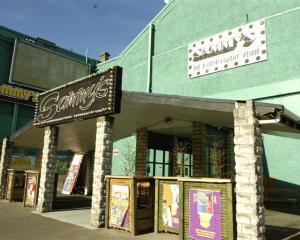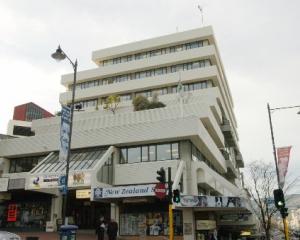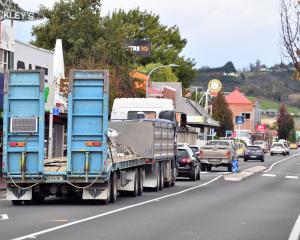The idea of switching some city traffic lights off at night, and allowing give-way rules to apply instead, is among several changes to traffic light sequencing in Dunedin being considered by the council.
Switching lights off - causing their orange lights to flash and indicate they were inoperative - was raised by deputy mayor Chris Staynes during a recent meeting of the infrastructure services committee.
He wondered whether it might be a solution to the frustration some motorists experienced, particularly at night, while stopped at a red light even when streets given green lights were devoid of traffic.
Council transportation operations programme engineer Michael Harrison confirmed the idea was among those being considered in a review of traffic light sequencing already under way.
It came as council staff planned to spend another $560,000 installing new traffic lights at busy intersections - including on Portsmouth Dr and Andersons Bay Rd - over the next few years.
Dunedin had about 50 intersections controlled by traffic lights, but the review focused on intersections on the north-bound one-way Crawford St, between Jervois St and lower Stuart St, he said.
That was where problems were believed to be at their worst for motorists, including those trying to turn on to or cross the one-way street from side streets, he said.
Traffic lights were computer-controlled with software designed to detect changes in traffic flows and adjust light sequences accordingly, he said.
However, Dunedin's relatively short bursts of peak traffic meant lights sometimes struggled to adjust quickly enough to sudden changes, leaving motorists stranded on red lights while other roads were clear, he said.
The area around Queens Gardens was a particularly bad spot during peak flows around 5pm, but careful consideration was needed to avoid changes that created bigger problems at other intersections, he said.
"You can't just do one intersection. You've got to look at everything up and downstream from it."
Solutions could include extra cabling to improve communication between sets of lights, changing sequences or turning some traffic lights off at night, he said.
Turning off lights was something done in some United Kingdom and North America cities, but not in New Zealand.
"It does have some merits ... It's not new, but whether it's the most applicable way to do it - I'm not sure on that.
"If that was the right solution there's nothing to stop it. It will be considered."
Unfortunately, Dunedin lacked the management system used in Christchurch, where 250 traffic light intersections were monitored, and switched manually when necessary, by staff working in a central control room.
"We can do the same thing too, if we can actually see what's happening . . . [but] we would have to drive out and see what's happening, and then come back and change it."
Changes to improve the system were expected to be detailed later this year, he said. The cost was not yet known, but would come from operational budgets.
A minor improvements programme for roading work, approved by councillors earlier this month, also budgeted $560,000 for new traffic lights to 2015.
Lights were planned at the Portsmouth Dr-Orari St intersection in 2011-12, and unconfirmed plans would see more lights replacing the Andersons Bay Rd-Bay View Rd roundabout in 2012-13 and added at the Hanover St-Filleul St intersection in 2014-15.
Lights were also scheduled for the Helensburgh Rd-Taieri Rd and George St-Albany St intersections later this year, as well as a signal-controlled crossing across Thomas Burns St.
The spending was included in the council's minor improvements programme, an NZTA-subsidised fund for projects worth less than $250,000 each around the city.
The programme paid for new traffic lights and improvements at intersections, pedestrian and cycleway paths and other work., Spending totalling $8.5 million was budgeted in the years to 2015-16, although subject to change.
DCC minor improvements programme
| 2011-12 | 2012-13 | 1013-14 | 2014-15 | 2015-16 | |
| New traffic signals | $160,000 | $240,000 | $0 | $160,000 | $0 |
| Intersection improvements | $160,400 | $318,000 | $450,000 | $320,000 | $366,000 |
| Delineation, curve widening, guardrail | $349,000 | $311,000 | $330,000 | $329,000 | $333,000 |
| Pedstrian/cycling and mobility | $768,000 | $784,200 | $888,000 | $782,100 | $720,000 |
| Traffic signal improvements | $60,000 | $60,000 | $60,000 | $60,000 | $60,000 |
| Total programmed | $1.498m | $1.713m | $1.728m | $1.651m | $1.479m |
| Total budget | $1.5m | $1.75m | $1.75m | $1.75m | $1.75m |
* Minor traffic improvements budget a New Zealand Transport Agency-subsidised work category for low-cost, low-risk improvement projects costing less than $250,000.
* Future years' budgets subject to change through DCC annual plan deliberations and/or NZTA funding allocations. Actual costs can also rise or fall because of the tendering process.












